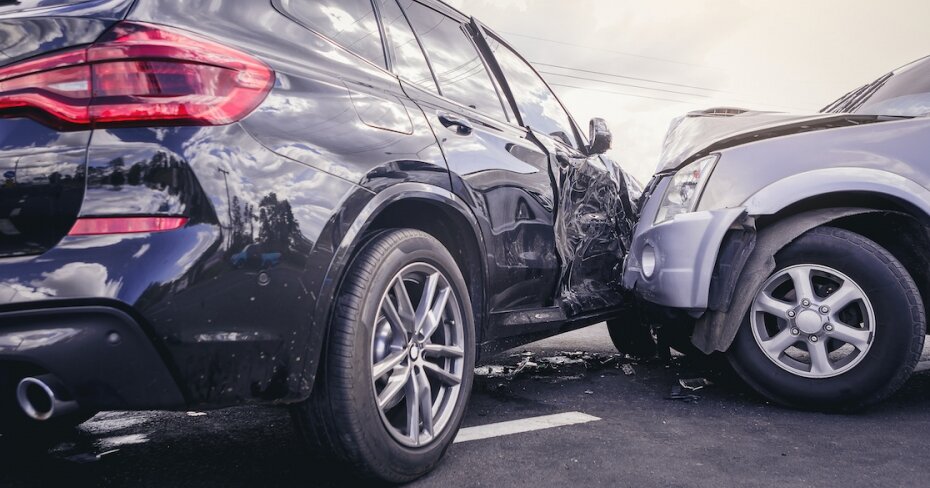So, what exactly is no-fault auto insurance?
By: Lisa Coxon on September 10, 2024
This article has been updated from a previous version.
No-fault insurance is a bit of a misnomer.
Contrary to popular belief, driving under a no-fault insurance system doesn’t mean that you can never be found at fault for a collision. Instead, it focuses on how your insurance company pays out your claim.
Under a traditional auto insurance system, the at-fault driver’s insurer is responsible for paying for the damage to both vehicles involved in the collision.
But under a no-fault insurance system, that’s not the case.
How does a no-fault system work?
Under a no-fault auto insurance system, the parties involved in the collision each file and settle claims with their respective insurance providers – regardless of who was at fault for the accident.
This system minimizes wait times for drivers seeking reimbursement for their damages by streamlining the claims handling process.
Before no-fault insurance was introduced in 1990, the process in Ontario was much more complicated. Insurance companies had to determine fault before any claims could be settled, often resulting in lengthy disputes and higher costs for drivers.
This created significant frustration for those seeking quick resolution and compensation, especially when unexpected medical needs arose, such as a sore spine requiring extensive rehabilitation.
How does a claim impact my insurance under a no-fault insurance system?
If you're involved in a car accident, the impact on your insurance depends on whether you are deemed at fault. Here's how a no-fault claim can affect your insurance:
At-fault accidents
If you are found to be at fault in an accident and have collision coverage, you will need to pay the deductible to cover repairs to your vehicle.
Following this, your insurance premiums are likely to increase. This increase could be mitigated if you have accident forgiveness as part of your policy, which prevents your first at-fault accident from affecting your rates. The incident will remain on your driving record for up to 3-6 years, potentially influencing future premiums and your eligibility for certain discounts.
Not at-fault accidents
If the accident is not your fault, you typically won't see an increase in your insurance premiums. However, it's essential to report the incident to your insurer to protect your coverage and ensure any necessary claims are processed correctly.
Understanding these factors can help you make informed decisions about your coverage options, such as choosing whether to include accident forgiveness in your policy.
The perks of driving under a no-fault system are that your claim typically gets resolved faster, which means you receive compensation sooner — and you only have to worry about dealing with one insurance company: your own. In short, it simplifies the claims process.
Read next: How an at-fault collision impacts your car insurance rates
What is covered under Ontario’s no-fault system?
Ontario's no-fault insurance system offers a range of essential coverages to protect drivers. Here’s a breakdown of these coverages:
Accident benefits
Mandatory coverage that provides for medical expenses, rehabilitation, and income replacement if you're injured, regardless of fault.
If a passenger in the car has accident benefits coverage, they can file claims through their own insurance. For those without personal insurance, such as young drivers or secondary drivers using a family member's vehicle, coverage is accessed through the driver's insurance involved in the accident.
Under a no-fault system, through accident benefits coverage in Ontario, you’re entitled to receive medical, rehabilitation and attendant care benefits from your insurance company. You’re also entitled to income replacement and other benefits, depending on how serious your injuries are.
Direct compensation property damage (DCPD):
This coverage quickly compensates for vehicle damage when another driver is at fault by allowing you to deal directly with your insurer (rather than having to navigate a lengthy claims processing process). You can choose to raise your deductible or decline DCPD entirely with endorsement OPCF 49, though doing so removes this no-fault protection.
In January 2024, the OPCF 49 endorsement, also known as the 'Agreement Not to Recover for Loss or Damage from an Automobile Collision,' was implemented, enabling drivers to choose this opt-out option. This change offers more flexibility for drivers regarding their insurance coverage choices.
Third-party liability
Third-party liability is mandatory coverage that safeguards you against claims for injuries, death, or property damage you may cause to others. While the minimum coverage is $200,000, it's recommended to carry at least $1 million.
Uninsured motorist coverage
Mandatory protection in case of an accident with an uninsured or hit-and-run driver, ensuring you're covered even when the at-fault party lacks insurance.
Read more: What happens if the person you lend your vehicle to gets into an accident?
Direct Compensation Property Damage in detail
One of the most important terms you’ve probably heard in a no-fault system is Direct Compensation Property Damage (DCPD). DCPD represents the (now optional) part of your auto insurance policy that covers damage to your vehicle when you’re found not at fault for a collision. If you are found at-fault, then damage will only be covered if you have collision coverage or all-perils coverage.
If you’re found at fault, you will still need to pay your collision deductible. But your insurance company won’t need to pay for the damages to the other driver’s vehicle.
Someone is always deemed "at fault" in a car accident, partially or fully using the ‘fault determination rules’. Insurance companies assign the percentage of fault for each driver involved in the accident.
What does DCPD cover?
Here's a breakdown of what DCPD covers:
- Damage to your vehicle: DCPD provides coverage for repairs to your vehicle, ensuring it's restored to its pre-accident condition.
- Loss of use: If your vehicle is out of commission due to an accident, DCPD covers the cost of renting a replacement vehicle or using alternative transportation until your car is repaired.
- Contents within the vehicle: Personal items that were damaged in your vehicle at the time of the accident are also covered.
Under section 6.2 of the Ontario Automobile Policy, DCPD coverage is subject to depreciation, meaning the payout will not exceed the actual cash value of the vehicle or property.
Actual cash value (ACV) is determined by the cost to repair or replace the property with similar kind and quality, minus depreciation. The compensation reflects the current market value of the vehicle or contents, accounting for wear and tear over time.
Related: What auto insurance coverage is mandatory in Ontario?
In summary, no-fault insurance in Canada offers streamlined claims processing and reduced legal costs, which can benefit drivers by providing quicker resolutions. However, understanding the coverage limitations is crucial for those navigating these policies to ensure they have adequate protection in the case of a collision.
Read next: How much auto insurance do you need in Canada?
Save 23% on average on car insurance
Compare 50+ quotes from Canadian providers in 3 minutes.

.jpg?itok=88nBkwga)
.jpg?itok=W5fSKczJ)